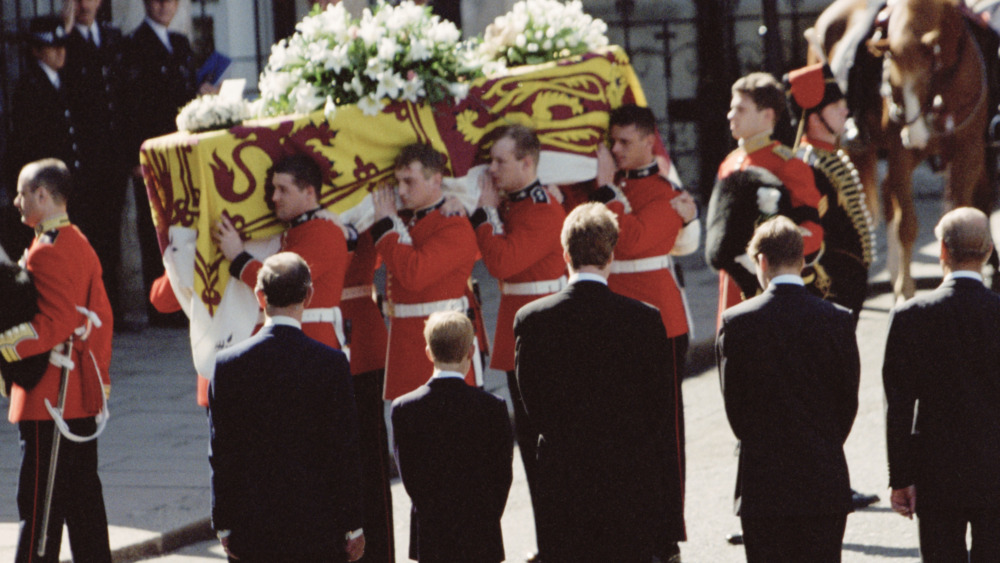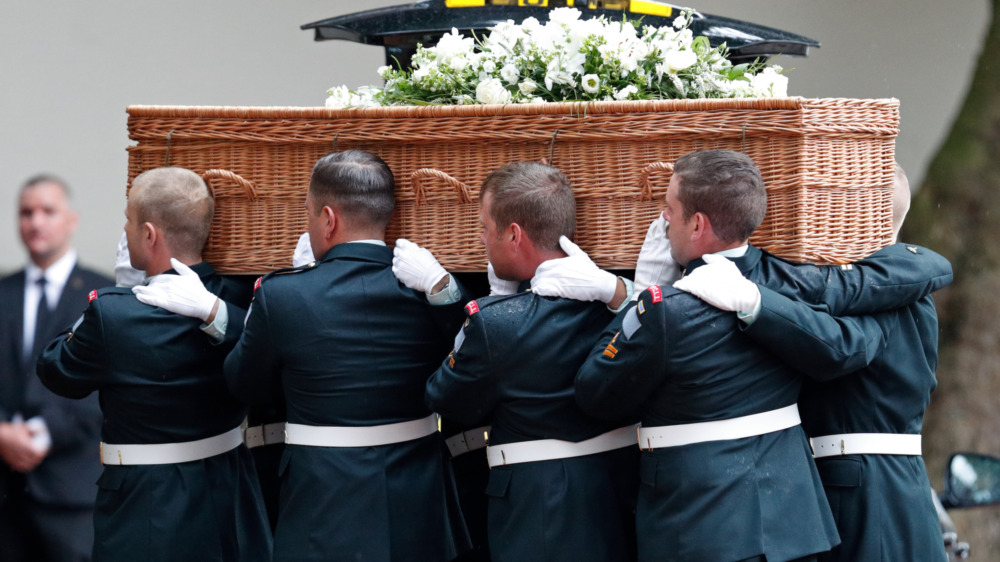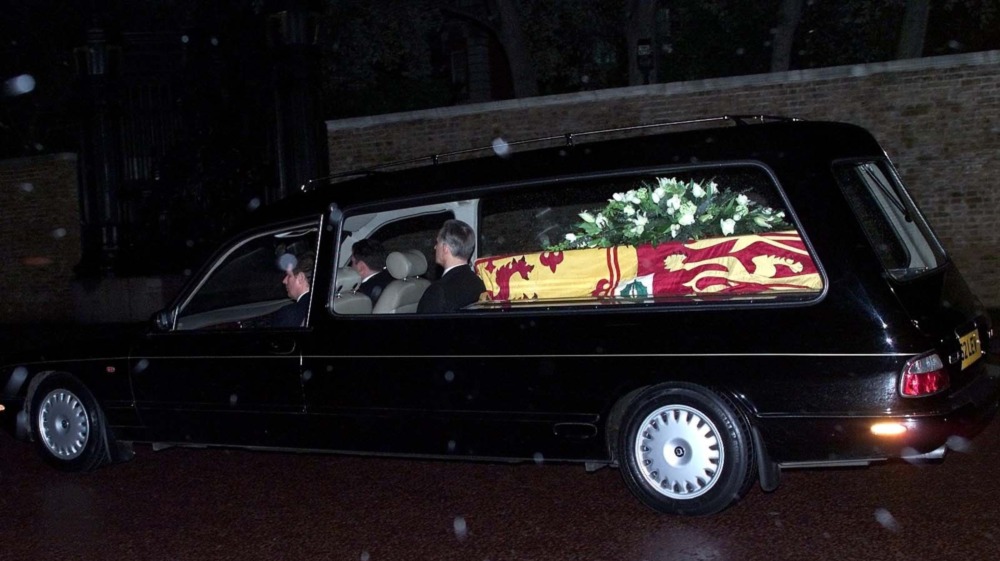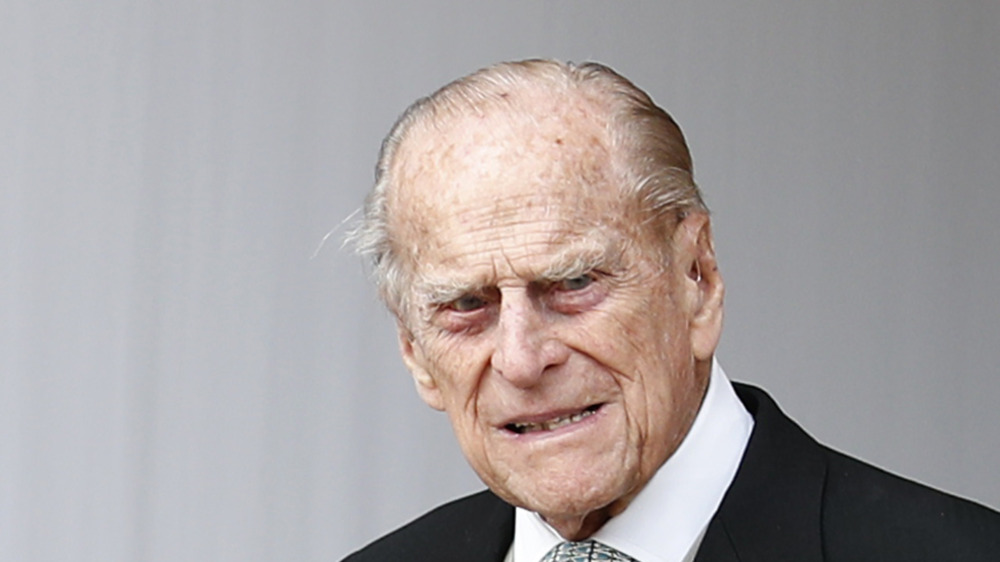The Real Reason The Royal Family Is Buried In Lead-Lined Coffins
Ahead the funeral proceedings for Prince Philip - which will be held at St. George's Chapel in Windsor on April 17, 2021 – it has been revealed that he will be buried in a lead-lined coffin, just as several other members of the royal family before him.
On April 13, the Daily Mail reported that more than 30 years prior to his death, Prince Philip and his wife Queen Elizabeth made the decision that they would be buried in matching lead-lined English oak coffins as they were laid to rest. But why is the family so keen on that specific type of coffin? Well, simply put, the lead helps keep moisture out, which allows for a longer preservation of the body.
As the outlet explained, it is typical for members of the British royal family to be laid to rest in this type of coffin; decades ago, it was noted that the coffin holding the body of Princess Diana was so thick with lead that it actually weighed "a quarter of a tonne," which is actually a good bit larger than the United States' version of a ton.
Lead-lined coffins are better for the environment
According to a report from Metro UK, lead coffins can preserve one's body for up to an entire year, not only because they are lined with lead, but also due to the fact that they can be sealed airtight, which is said to slow the decomposition of the body. The outlet went on to note that the lead lining helps to seal the coffin and ensures that the smell, or the toxins, of the dead body are unable to escape from the enclosure, which could cause harm to the environment.
After the funeral, Prince Philip's body will be stored in the Royal Vault until the passing of Queen Elizabeth. At that point, both of their bodies will be taken to the memorial chapel in Frogmore Gardens, where they will remain.
As for the service, it's reported due to the ongoing coronavirus pandemic, the attendance is limited to a maximum of 30 people.
Princess Margaret broke with tradition
Not all of the royals have chosen to be buried in these special coffins though. Princess Margaret, who passed away in 2002, was cremated before her ashes were laid in a casket which now rests next to the coffin of her father, King George VI. But The Irish Times, which reported on the story, acknowledged that her unconventional requests were a "break with royal tradition" and reflected her wish to be reunited with her father.
But the practice isn't reserved for royals alone. When former Prime Minister Winston Churchill passed away in 1965, he was also buried in a special coffin, and the pallbearers only found out after the service had begun, because they didn't expect the coffin to be so heavy. "The coffin, we were led to believe by the undertakers was lead-lined," one pall-bearer told the BBC. It is not known whether Churchill's coffin was any different from any others of his time, but as the BBC also points out, Churchill was the only "commoner" that had been given a state funeral, so it wouldn't be surprising if the coffin would be one befitting the occasion too.
Covid restrictions have required that Prince Philip's funeral be scaled back
The use of a lead-lined coffin is the only part of Prince Philip's funeral that might be considered traditional, thanks to the ongoing COVID-19 pandemic. As Tatler points out, if not for the ongoing pandemic, the late Duke of Edinburgh's passing would have been marked by much ceremony, particularly since he is the longest-serving royal consort in British history.
Instead of a guest list which should have topped 800, only 30 will be at the funeral service, which will be attended by the queen and members of the royal family, and which will take place at St George's Chapel at Windsor. The heavy coffin will be carried by a team of Royal Marines, and they will be met by the Dean of Windsor and the Archbishop of Canterbury.
Under the original arrangement, which was called Operation Forth Bridge, members of the Armed Forces would have lined the streets in Prince Philip's honor, with police officers deployed to keep the peace. In accordance with his royal standing and military career, Prince Philip would have had a military procession that would have taken him from London to Windsor, and would have seen thousands lining the streets to catch a glimpse of the funeral march (via iNews).



